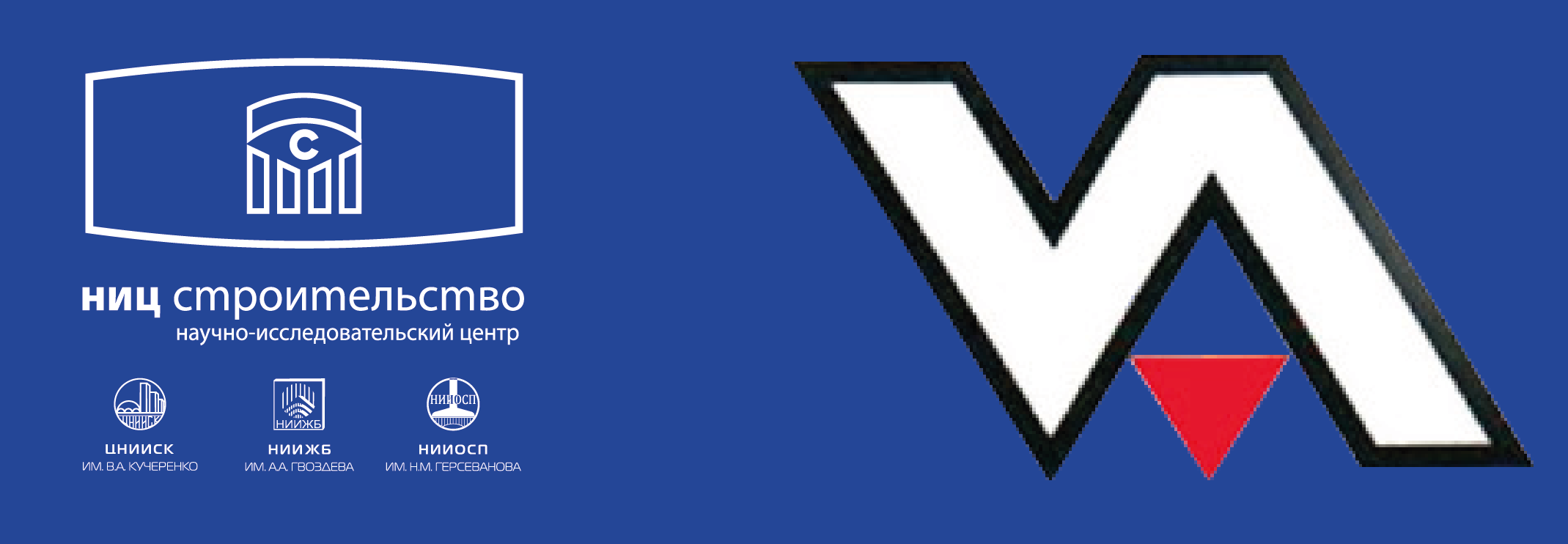Influence of Dispersed Industrial By-Products on the Strength of Concrete
Abstract
The introduction of dispersed mineral additives has a beneficial effect on many properties of concrete. This is due to a physical effect, which manifests itself in the fact that small particles usually have a finer granulometric composition than Portland cement and manifest themselves as a “micro-filler”. On the other hand, this may be due to their pozzolanic activity, which is manifested in the ability of silica and alumina to interact with calcium oxide hydrate and form calcium hydrosilicates and hydroaluminates. In this work, the activity of mineral dispersed components was estimated by the theoretical value of the coefficient of hydration activity, which was determined by their chemical composition. The actual coefficient of hydration activity was calculated from the maximum value of the mass
gain of dispersed industrial by-products by absorbing Ca(OH)2 from a saturated lime solution by these additives. The quantitative and material composition of crystalline compounds in industrial by-products was determined by one of the indirect methods, namely, by X-ray phase analysis. Experimental data showed that the actual pozzolanic activity was much lower than the theoretical value, and therefore the industrial by-products were arranged in the following sequence: ash-slag mixture - coal-enrichment by-product - blast furnace granulated slag, which is confirmed by the results of X-ray phase analysis and is consistent with the values of the compressive strength of concrete tested in different hardening periods.
About the Authors
E. S. GaishunKh. S. Yavruyan
Russian Federation
Candidate of Sciences (Engineering)
e-mail: khungianos@mail.ru
A. K. Khalyshev
Russian Federation
Candidate of Sciences (Engineering)
e-mail: khaljushev@mail.ru
V. N. Bobin
References
1. Popov S.V. Fine-grained dense concrete with special properties on aggregates made of coal and anthracite ash and slag materials from TPP of Donbass. Dis ... Candidate of Sciences (Engineering). Makeevka. 2003. 184 p. (In Russian).
2. Belyakova Zh.S., Velichko E.G., Komar A.G. Environmental, materials science and technological aspects of the use of TPP ash in concrete. <i>Stroitel’nye Materialy</i> [Construction Materials]. 2001. No. 3, pp. 46–48. (In Russian).
3. Reznichenko P.T., Chekhov A.P. Okhrana okruzhayushchei sredy i ispol’zovanie otkhodov promyshlennosti. Spravochnik [Environmental protection and use of industrial waste. Directory.]. Dnepropetrovsk: «Promіn’». 1979. 174 p.
4. Malinina L.A., Batrakov V.G. Concrete science: present and future. <i>Beton i Zhelezobeton</i> [Concrete and Reinforced Concrete]. 2003. No. 1, pp. 2–6. (In Russian).
5. Ferraris C.F., Obla K.H., Hill R. The influence of mineral admixtures on the rheology of cement paste and concrete. <i>Cement and Concrete Research.</i> 2001. Vol. 31. No. 2, pp. 245–255. https://doi.org/10.1016/S0008-8846(00)00454-3
6. Moranville-Regourd M. Portland cement – based binders – cements for the next millennium. <i>Proceedings of the International Conference “Creating with Concrete”.</i> Dundee.1999, pp. 87–99.
7. Naik T.R., Kraus R.N. Use of industrial by-products in cement-based materials. <i>Proceedings of the International Conference “Creating with Concrete”.</i> Dundee. 1999, pp. 23–34.
8. Mchedlov-Petrosyan O.P. Khimiya neorganicheskikh stroitel’nykh materialov [Chemistry of inorganic building materials]. Moscow: Stroyizdat. 1977. 224 p.
9. Volzhenskii A.V. Mineral’nye vyazhushchie veshchestva [Mineral binders]. Moscow: Stroyizdat. 1986. 464 p.
10. Braginsky V.G., Popov V.V. Economical types of concrete with the use of fuel waste from the state district power station. <i>Modern problems of construction: an annual scientific and technical collection.</i> 1997, pp. 88–94. (In Russian).
11. Popov S.V., Braginskii V.G., Mel’nichenko I.V., Davidenko V.P. <i>Modern problean annual scientific and technical collection.</i> 2007. No. 5(10), pp. 123–127. (In Russian).
12. Ramachandran V.S., Fel’dman R.F., Kollepardi M. Dobavki v beton [Additives to concrete]. Moscow: Stroiyzdat. 1988. 575 p.
13. Li G. Properties of high-volume fly ash concrete incorporating nano-SiO<sub>2</sub>. <i>Cement and Concrete Research.</i> 2004. Vol. 34. No. 6, pp. 1043–1049. https://doi.org/10.1016/j.cemconres.2003.11.013
14. Sabir B.B., Wild S., Bai J. Metakaolin and calcined clays as pozzolans for concrete: a review. <i>Cement and Concrete Composites.</i> 2001. Vol. 23. No. 6, pp. 441–454. https://doi.org/10.1016/S0958-9465(00)00092-5
15. Shvarzman A., Kovler K., Schamban I. Influence of chemical and phase composition of mineral admixtures on their pozzolanic activity. <i>Advances in Cement Research.</i> 2001. Vol. 13. No. 1, pp. 1–7.
16. Skhvitaridze R.E. Chemistry of cement and methods for accelerated prediction of the compressive strength (activity) of cements with mineral additives and concrete. <i>Beton i Zhelezobeton</i> [Concrete and Reinforced Concrete]. 2005. No. 3, pp. 6–11. (In Russian).
17. Yavruyan Kh.S., Gaishun E.S., Kotlyar V.D., Okhotnaya A.S. Features of phasea mineralogical conversions when burning wall ceramics on the basis of secondary materials for processing coal deposits of eastern Donbass. Materials Science Forum. 2019, pр. 67–74.
18. Kotlyar V.D., Yavruyan Kh.S., Gaishun E.S., Terekhina Yu.V. An integrated approach to the processing of coal mining waste in the Eastern Donbass. <i>Municipal waste management as an important factor in the sustainable development of a metropolis.</i> 2018. No. 1, pp. 115–118. (In Russian).
19. Yavruyan Kh.S., Gaishun E.S., Kotlyar V.D., Serebryanaya I.А., Filippova A.А., Gaishun A. S. Selection of compositions of ceramic masses based on industrial wastes using mathematical planning methods. <i>E3S Web Conf.</i> 2020. Vol. 164. https://doi.org/10.1051/e3sconf/202016414017
20. Yavruyan Kh.S., Kotlyar V.D., Gaishun E.S. Medium-fraction materials for processing of coal-thread waste drains for the production of wall ceramics. <i>Materials Science Forum.</i> 2018. Vol. 931. MSF, pp. 532–536. https://doi.org/10.4028/www.scientific.net/MSF.931.532
21. Yavruyan Kh.S., Gaishun E.S., Kotlyar V.D., Serebryanaya I.А., Filippova A.А., Gaishun A.S. Selection of compositions of ceramic masses based on industrial wastes using mathematical planning methods. <i>E3S Web Conf.</i> 2020 Vol. 164. https://doi.org/10.1051/
22. e3sconf/202016414017
23.
Review
For citations:
Gaishun E.S., Yavruyan Kh.S., Khalyshev A.K., Bobin V.N. Influence of Dispersed Industrial By-Products on the Strength of Concrete. Concrete and Reinforced Concrete. 2021;604(2):8-13. (In Russ.)











